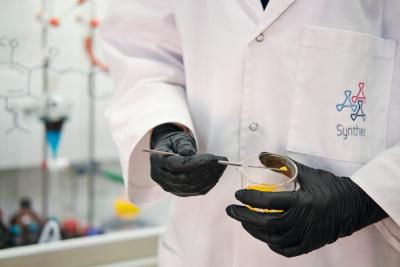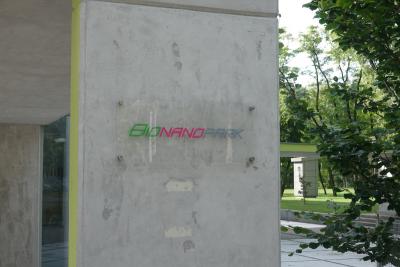A new company has recently been launched in Poland, to commercialize a new family of TADF OLED compounds. Noctiluca, which takes its name from a bio-luminescent marine creature, was established a few months ago with aims to be the world's first company to produce a commercial-ready blue TADF emitter.

Noctiluca's story begins with an innovative organic DSSC solar cell platform that was developed at Synthex, an organic chemistry development platform company based in Torun, Poland. A few years ago the researchers turned their attention to light emitting materials (which are quite similar to the light harvesting materials used in solar panels) and intensive research culminated in a promising family of new TADF compounds - which was then spun-off as Noctiluca,
Noctiluca's team, based in Toruń and led by organic chemistry specialist Dr. Mariusz Bosiak, is focused on developing the next generation of OLED emitters. The company is collaborating with the organic electronics experts at the BioNanoPark for the device fabrication and the University of Technology for emitter and device characterization - which frees the company to focus mainly on finding the best compounds for durable and efficient TADF emission.

Noctiluca recently closed its pre-seed round and is aiming to raise its formal seed round in early 2020. The company has already produced some promising TADF devices and will soon share its results with the industry.
Comments
Thank you, D, for your message. We appreciate what you are saying, although at this point we cannot reveal further details. But we have already developed several well working blue OLED devices and hopefully, we will be able to present them in more detail in a short couple of months. Stay tuned and feel free to get in touch with us through our website (https://noctiluca.eu/) if you would like to discuss it privately.Kris Czaplicki, COO at Noctiluca
Would be great if you were at CES as a partner with a tier one manufacturer.
"The company is collaborating with the organic electronics experts at the BioNanoPark in Łódź for the device fabrication and the University of Technology in Łódź for emitter and device characterization - which frees the company to focus mainly on finding the best compounds for durable and efficient TADF Emission."
To not have emitter and device characterization frees the Company to focus on synthezing compounds without industry-required capabilities and ressources. Commercial-grade TADF Emitters in 2021 means you have found the lead molecules last year and are now tuning the decoration of the molecules to fit evaporation properties, IVL-curve in customer-relevant devices.
For that the Company has JDAs with other material suppliers or Display OEMs in place since 2017 years to work with commercial grade transport and host materials.
Why to look for TADF blue to demonstrate commercial relevance of the technology, if this is the toughest part?


There is always the possibility of a dark horse overtaking competitors like Merck, UDC, Kyulux and CYNORA, but the two parameters cited in this article are frankly insignificant (there are literally dozens of papers out there with this or similar performance). Hard to take this serious, unless they have something more substantial to show.